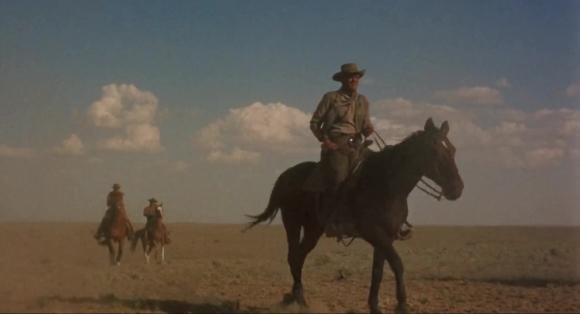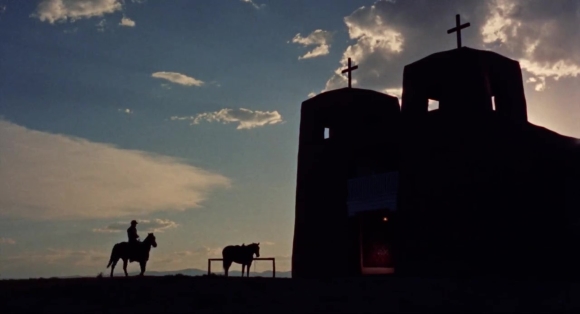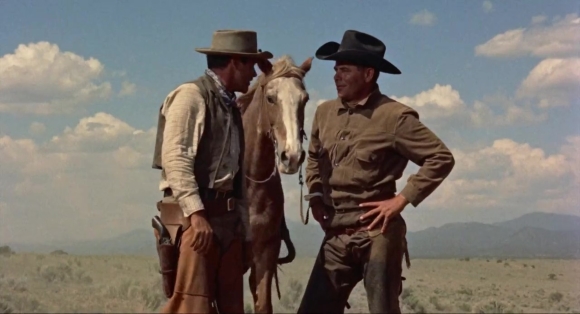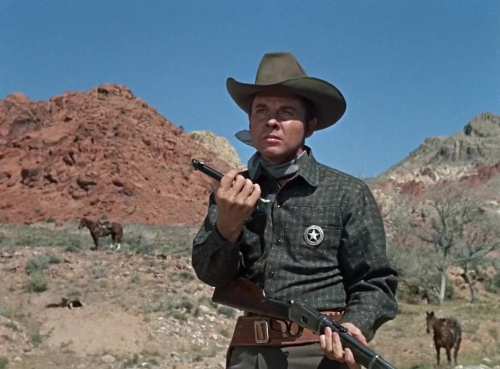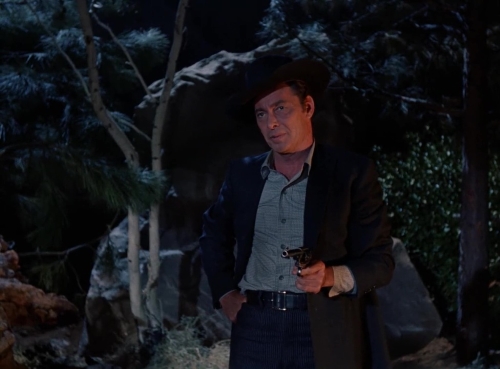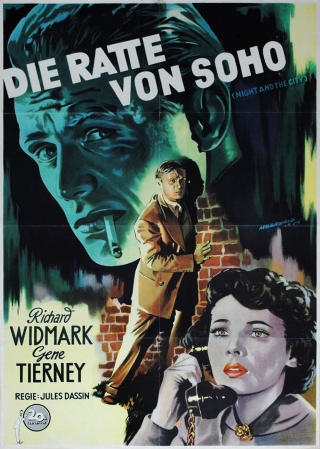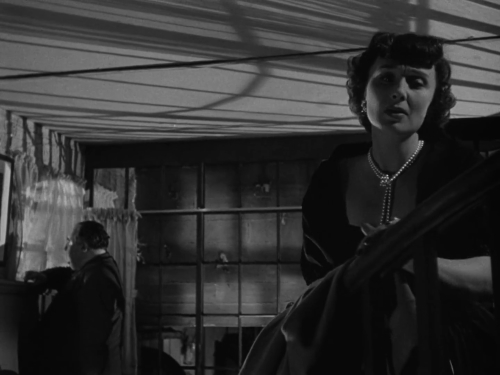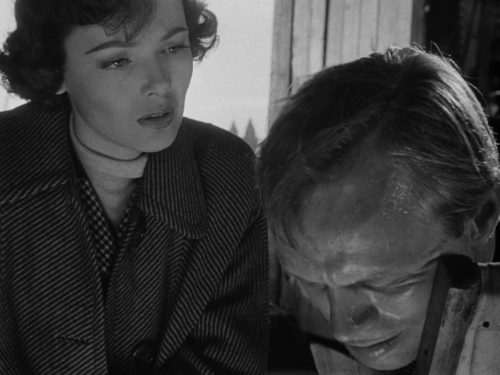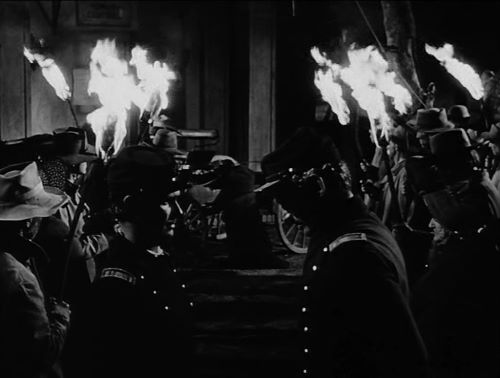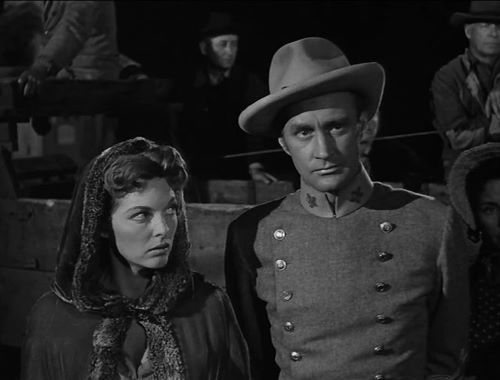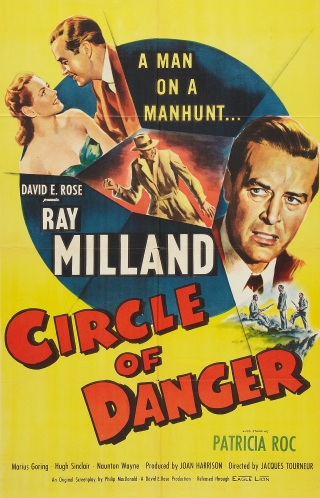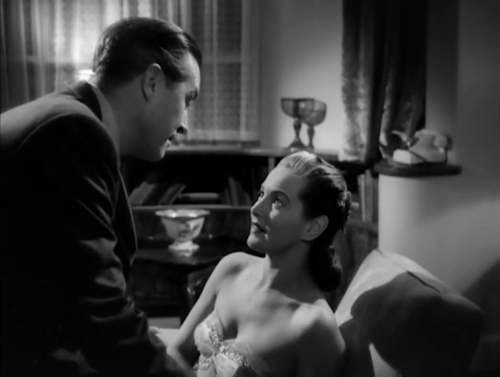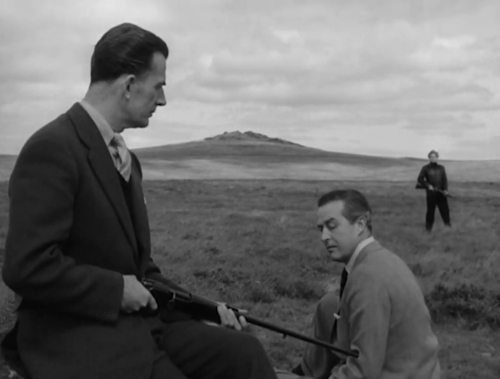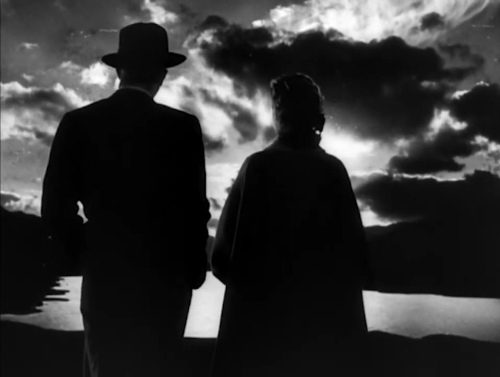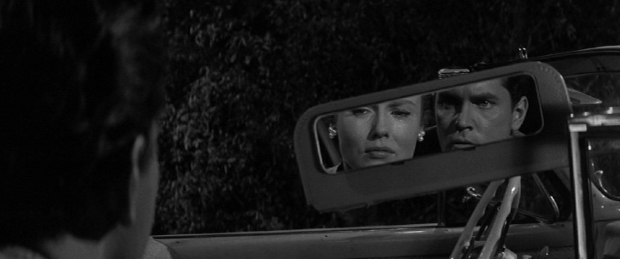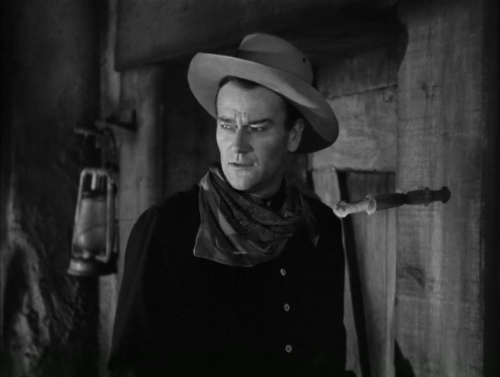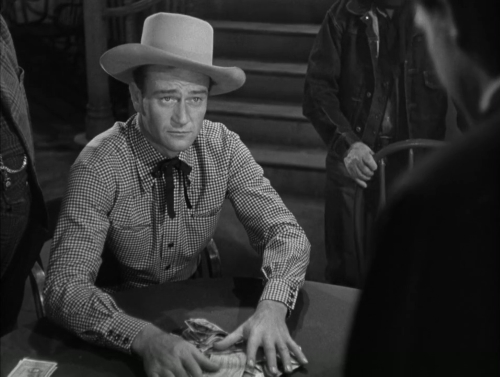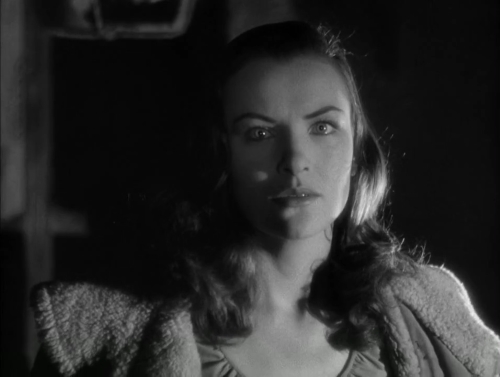Fate and free will, two philosophical concepts that go to the heart of the human condition and form the basis of a good deal of religious thinking and debate. They loom large in the world of film noir too, though that shouldn’t come as any great surprise since art and our perception of our place in the scheme of things are inseparably linked. Fritz Lang’s Human Desire (1954), made as he was approaching the end of his time in Hollywood, posits both fate and free will as drivers of his characters and invites viewers to make up their own minds on which exerts the more powerful influence. I’m of the opinion that Lang himself regards both of these concepts as being in play simultaneously and that there are certain points at which individuals have the opportunity to exercise their free will in order to determine which path of fate they will lock themselves into.
If one were to seek a visual metaphor for fate as a fixed and predetermined path, then a railway line is as good a one as any. Sleek and clean, indicative of precision and order, the lines forge the way ahead, carrying their passengers to a destination that lies at the end of the track as sure as a compass needle points to north. Yet the lines run in more than one direction and points do exist where it’s possible to shunt from one to the other. Human Desire opens with those railroad lines and the locomotives that carry all kinds of people to all kinds of places, starting and ending with absolute certainty at predefined locations that can no more be avoided or cheated than birth and death themselves. In between though, the choices are available, laid before the driver as he advances and by extension before those he brings along with him on the journey. Jeff Warren (Glenn Ford) is an engineer on the railroad, back home and back in his old job after serving in the Korean War. He is very much a regular guy doing a regular job, following those clearly defined lines in life in many ways. There’s nothing particularly special about him, he’s no medal adorned hero nor does he profess to have any ambitions beyond the desire for an uneventful life. However, a movie with this title must necessarily focus on desires affecting all kinds of people and even changing according to circumstances. Carl Buckley (Broderick Crawford) is an old acquaintance, a man who has risen to assistant yard master while Warren was off at war. He’s a blunt, brutish character, loud of mouth and quick of temper who manages to get himself fired for quarreling with his supervisor.
Desperate to get his job back – he’s only got a few more years to do before he qualifies for a pension after all – he badgers his wife into interceding on his behalf with a big city businessman who he figures has sufficient clout to see him reinstated. His wife Vicki (Gloria Grahame) is much younger and it’s immediately clear from her reaction that there is some history involving herself and the corporate bigwig that goes beyond the fact her mother was once his housekeeper. This is the catalyst for the snarl up in the lives of all concerned that follows. It’s made clear that Vicki gets Carl his job back by offering sexual favors. Even though he brought about this situation and essentially forced his wife into a compromising position, Carl is affronted, savagely beating her and making her an unwilling accessory to murder. A sordid business all round and one whose spreading ripples draw in Jeff Warren, who just happens to be riding the same train when the killing takes place and subsequently finds himself fatally attracted to Vicki.
Does one slaying inevitably lead to another? Do abusive, dehumanizing relationships become habit forming and addictive? Are the patterns woven by rotten choices and poor judgement indelible? Or can a virtual lever be pulled at the crucial point and send a life back onto a track that hauls it away from destruction? All of these questions are posed during the course of Human Desire and are answered at least in part by the close. While I’ve no wish to take any credit away from scriptwriter Alfred Hayes, adapting Jean Renoir’s own adaptation of an Émile Zola novel, it seems clear enough that these are themes Lang addressed on multiple occasions and thus carry the director’s imprint too.
Glenn Ford’s everyman qualities are to the fore in Human Desire. He plays Jeff Warren with a directness and simplicity that befits an uncomplicated working man who is unexpectedly snared in a web of temptation and desire. He is faced with the dilemma of succumbing to the vagaries of fate or using his free will to chart an alternative course. Ford’s ability to present frankness alongside a hint of personal dissatisfaction and discomfort works well under the circumstances. I see a touch of resentment early on in his realization that men like Buckley have prospered while he was doing his duty in Korea, it’s just barely there but I think it helps color some of his subsequent actions and decisions. In contrast, Gloria Grahame’s mistreated femme fatale is anything but straightforward, veering from victim to manipulator, cowering one moment and goading the next, and effortlessly alluring throughout. Her work alongside Ford here makes for an interesting companion piece to their previous collaboration with Lang in The Big Heat. Crawford too is neatly cast, by turns shambling and violent he’s a doomed figure haunted by his inadequacy and too ineffectual to challenge his own fate. On the other hand, Edgar Buchanan and Diane DeLaire as Ford’s landlord/colleague and his wife provide an alternative take on marriage. Their affectionate devotion in effect represents the other route available to Ford, in stark contrast to the dysfunctional dynamic of the Grahame-Crawford mismatch.
Human Desire ought to be easy enough to view these days. I have the UK Blu-ray from Eureka, a dual format release that looks terrific, and there is a Kino version available in the US as well. The main supplemental feature on the Eureka Blu-ray consists of an interview with Tony Rayns which fills in some background information on the making of the movie as well as comments on scriptwriter Hayes. I’m not sure the contributor fully gets the film though and he raises a number of points I found myself taking issue with, not least that tiresome critical gambit of looking at movies in terms of what they are not rather than what they are. Anyway, his is an interesting perspective, even if I don’t share all his conclusions. Personally, I’ve always been fond of Human Desire for its thoughtful exploration of themes and motifs that frequently grace Fritz Lang’s movies. Well worth checking out.







